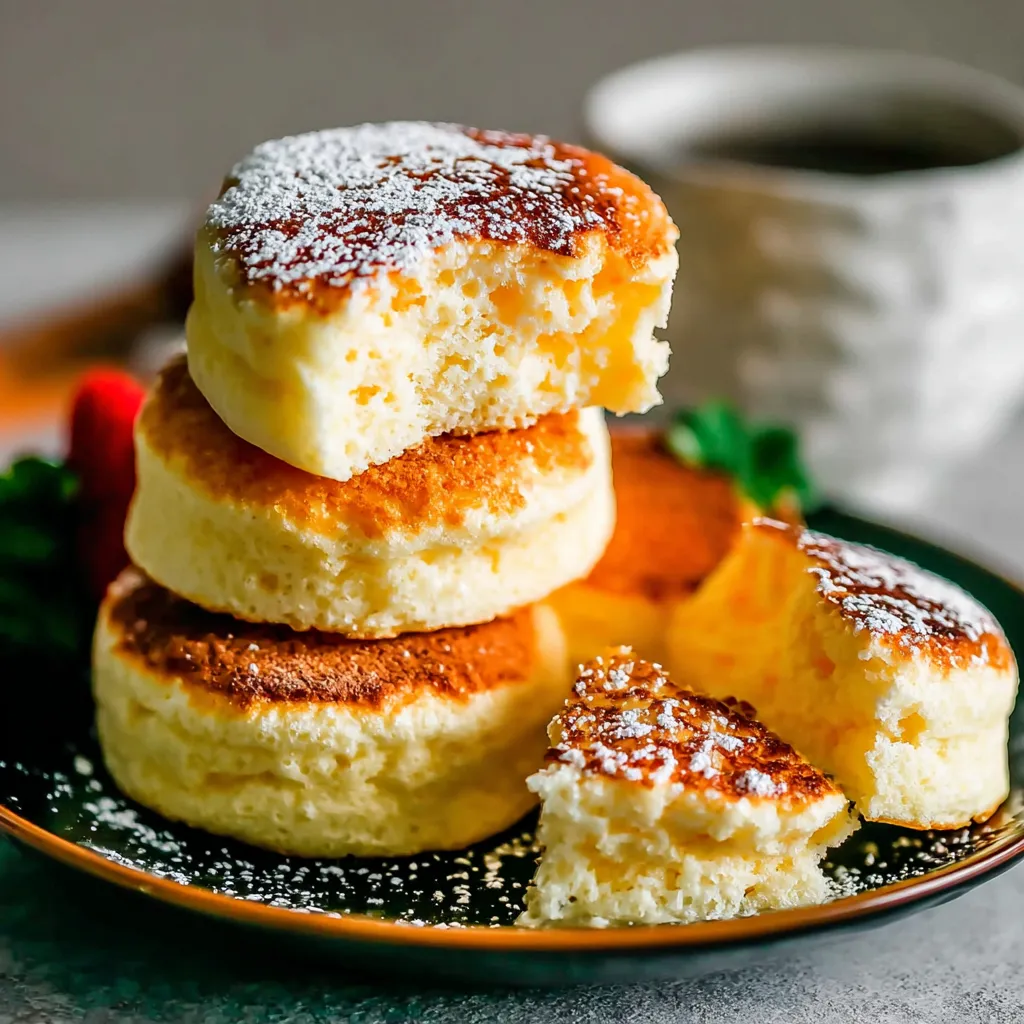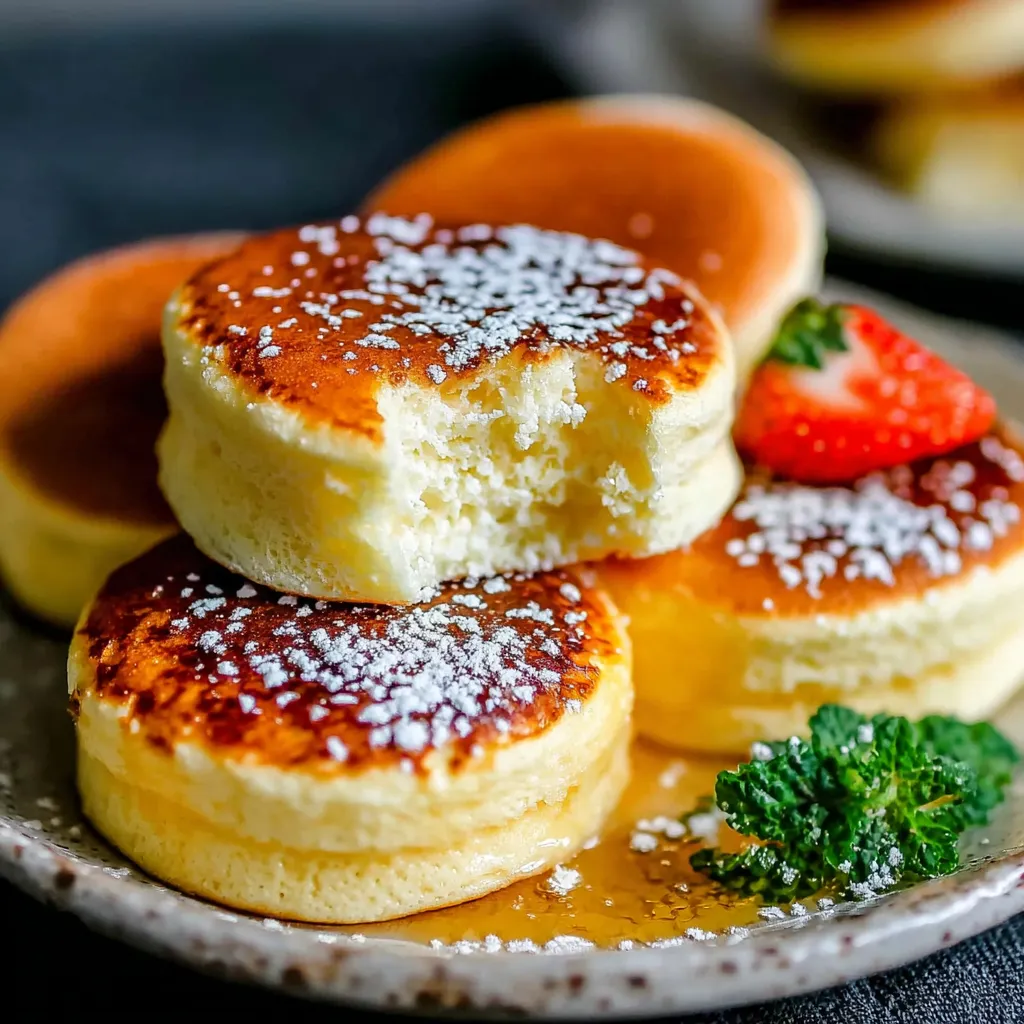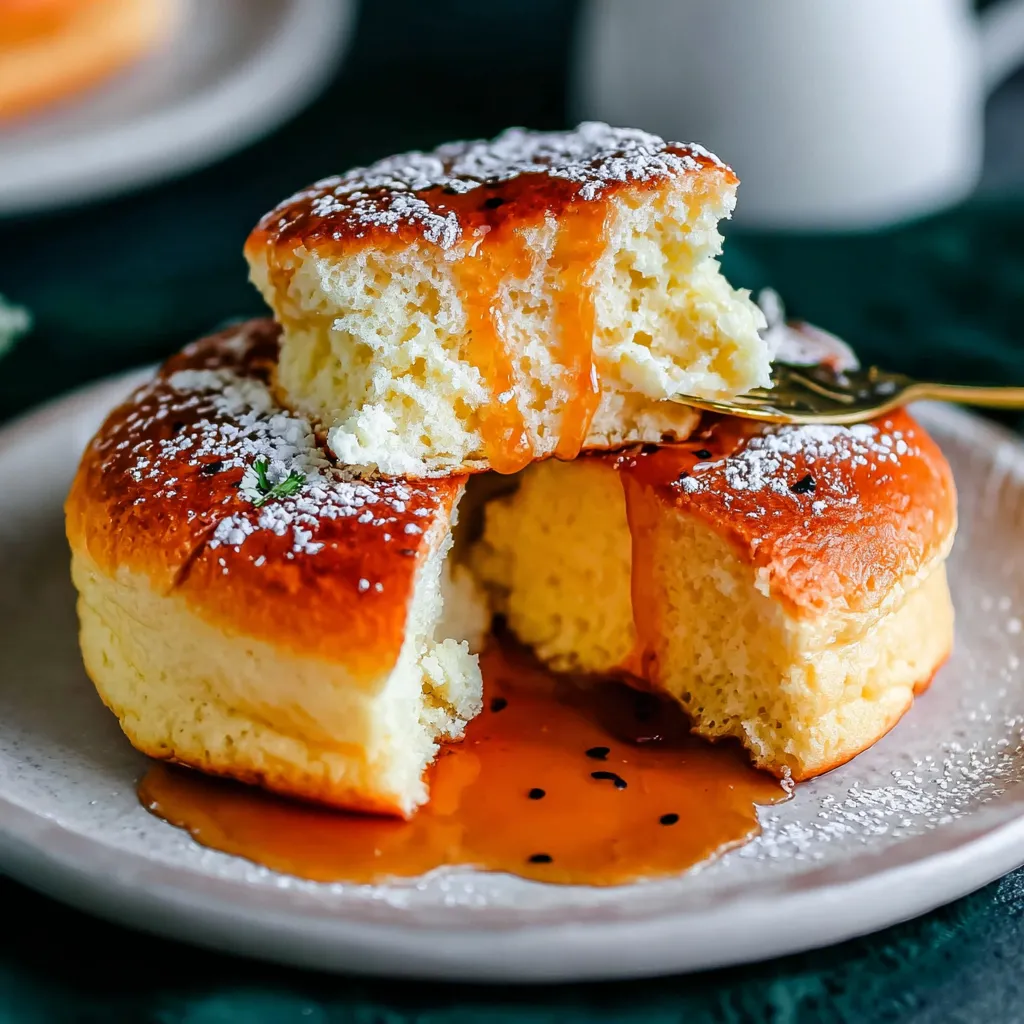 Save
Save
This Japanese souffle pancake recipe will transport you to the trendy cafes of Tokyo with pillowy, cloud-like pancakes that jiggle with each bite. After my first trip to Japan, I became obsessed with recreating these gravity-defying breakfast treats at home until I finally perfected this technique.
I first made these pancakes for my partner on our anniversary morning and now they've become our special weekend tradition. The looks of delight when those towering pancakes arrive at the table make the extra effort completely worthwhile.
Ingredients
- Egg yolks create a rich base that provides structure to these fluffy pancakes
- Egg whites whipped to stiff peaks are the secret to achieving that signature height
- Cake flour gives a more delicate texture than all-purpose flour could ever provide
- Baking powder adds additional lift to make these pancakes extra airy
- Whole milk contributes necessary fat for tenderness
- Vanilla extract adds subtle warmth and depth to the flavor profile
- Granulated sugar not only sweetens but helps stabilize those whipped egg whites
- Water creates steam during cooking which helps the pancakes rise and cook evenly
- Butter prevents sticking and adds a beautiful golden color to the exterior
Step-by-Step Instructions
- Prepare the base batter
- Separate your eggs with extreme care ensuring no yolk contaminates the whites. Whisk the yolks with milk and vanilla until smooth and pale yellow. The mixture should fall from the whisk in ribbons.
- Create the dry mixture
- Sift the cake flour, baking powder, and salt together twice to ensure no lumps remain. Gently fold this into your yolk mixture until just combined. Overmixing will develop gluten and make your pancakes tough rather than fluffy.
- Whip the egg whites
- In a completely clean and dry bowl, beat egg whites on medium speed until frothy. Gradually add sugar while continuing to beat until you achieve stiff, glossy peaks that hold their shape when the beater is lifted. This typically takes 3 to 4 minutes with an electric mixer.
- Combine with care
- Using a large spatula, gently fold one third of the egg white mixture into the yolk batter to lighten it. Then carefully fold in the remaining whites with a slow cutting motion, maintaining as much air as possible. The batter should be light, airy and slightly thick.
- Cook with patience
- Heat a nonstick skillet over very low heat. Add a small amount of butter and wipe excess with paper towel. Use a large ice cream scoop or measuring cup to place three mounds of batter into the pan. Add water around the pancakes and immediately cover with a lid to create steam.
- Perfect the flip
- After about 5 minutes when the bottoms are golden and the tops begin to set, use two spatulas to gently flip each pancake. Add more water, cover again, and cook for an additional 4 minutes until completely set but still jiggly in the center.
 Save
Save
My favorite part about making these pancakes is the moment you lift the lid to find them magically rising to double their height. The first time I successfully made these for my Japanese friend, she said they tasted exactly like the ones from her favorite café in Osaka, which remains one of my proudest culinary moments.
Storage And Reheating
While these pancakes are undoubtedly best enjoyed immediately after cooking, you can store leftovers in an airtight container in the refrigerator for up to 24 hours. To reheat, place them on a microwave safe plate and heat for 15 to 20 seconds. They won't be quite as fluffy as when freshly made, but they'll still taste delicious.
Common Mistakes To Avoid
The most critical factor in successful souffle pancakes is temperature control. Many home cooks use heat that's too high, which causes the pancakes to brown quickly on the outside while remaining raw inside. Maintain patience with a very low heat setting throughout the entire cooking process. Also, resist the urge to open the lid frequently as this releases the vital steam needed for proper cooking.
Serving Suggestions
These ethereal pancakes need little embellishment, but fresh seasonal berries complement them beautifully. A light dusting of powdered sugar creates that picture perfect presentation. For an extra special touch, serve with a small pitcher of warm maple syrup or honey. In Japan, these are often served with a dollop of whipped cream and a side of matcha ice cream for an indulgent dessert experience.
 Save
Save
Recipe FAQs
- → Why do my Japanese Souffle Pancakes deflate?
Souffle pancakes deflate when they cool down (this is normal), but premature deflation usually happens if the egg whites aren't whipped to stiff enough peaks, the batter is overmixed, or the cooking temperature is too high or too low. Make sure to fold the egg whites gently and cook on low, consistent heat with the lid on.
- → Can I make the batter ahead of time?
It's not recommended to make souffle pancake batter ahead of time. The whipped egg whites that give these pancakes their height will deflate if left sitting too long. For best results, prepare the batter just before cooking.
- → Why add water to the pan when cooking?
Adding water to the pan creates steam under the lid, which helps cook the pancakes evenly and thoroughly. This steam-cooking method ensures the tall pancakes cook through the middle before the outsides burn, resulting in that perfect souffle-like texture.
- → Can I substitute cake flour with all-purpose flour?
Yes, you can substitute cake flour with all-purpose flour, but the texture won't be quite as delicate. For a closer match, use 7 tablespoons of all-purpose flour mixed with 1 tablespoon of cornstarch for every 1/2 cup of cake flour called for in the recipe.
- → How do I know when it's time to flip the pancakes?
Japanese souffle pancakes are ready to flip when the bottom is golden brown and the top has begun to set (though still soft). The pancakes should hold their shape and not be liquid in the middle. This typically takes about 5-6 minutes on the first side when cooking on low heat.
- → What's the best way to serve Japanese Souffle Pancakes?
Serve Japanese souffle pancakes immediately after cooking as they will naturally deflate somewhat as they cool. Traditional toppings include maple syrup, whipped cream, fresh fruits like strawberries or blueberries, and a light dusting of powdered sugar. They also pair beautifully with matcha-flavored toppings or red bean paste for an authentic Japanese twist.
